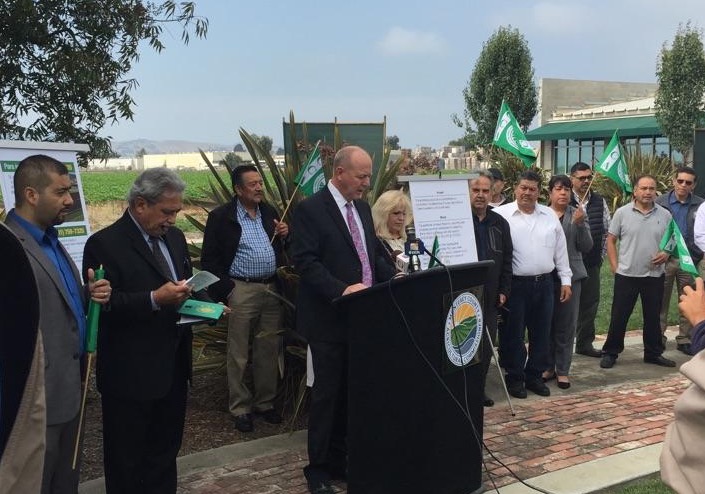California Shows Decreased Use of Most-Hazardous Pesticides
There Was a Big Decline of Hazardous Material Used in 2017
News Release
The amount of pesticides used statewide declined in 2017 according to new data from the California Department of Pesticide Regulation. This includes a drop in many of the most hazardous chemicals, including pesticides that are carcinogens, and those with the potential to contaminate groundwater and air.
According to the 2017 Pesticide Use Report, the overall amount of pesticides used in California dropped to about 205 million pounds in 2017. That was a decrease of 2 percent from the previous year. Agriculture use, which accounts for the greatest pesticide use in California, dropped by 3.7 million pounds (1.9 percent) from 2016. Pesticide use in other applications, including landscaping and structural pest control, also decreased in 2017.
“This report demonstrates that California’s farmers continue to lead the way when it comes to using more sustainable pest management tools and techniques,”said Val Dolcini, Acting Director of DPR. “DPR looks forward to continuing its collaboration with growers, community groups, and other interested citizens to ensure that these pesticides are used in the safest manner possible. “
California produces nearly half of American grown fruits and vegetables, and the amount of pesticides used varies annually depending upon pest problems, weather and other factors.
You can see a short video at https://youtu.be/QKgExqdRpNM
Other highlights of the 2017 Pesticide Use Report data include:
- The use of carcinogenic pesticides decreased by 5.6 percent to 41.7 million pounds, compared to 44.2 million pounds in 2016.
- The use of fumigant pesticides decreased by 5.8 percent to 39.5 million pounds, compared to 41.9 million pounds the previous year.
- The use of pesticides that are toxic air contaminants decreased by 6.4 percent to 43 million pounds, compared to 45.9 million pounds in 2016.
- The use of pesticides with the potential to contaminate ground water decreased by 25.3 percent to 0.4 million pounds compared to 0.5 million pounds in 2016.
- The use of pesticides identified as cholinesterase inhibitors, which can affect the nervous system, decreased by 2.6 percent to 4.2 million pounds compared to 4.3 million pounds in 2016. The pesticide chlorpyrifos is included in this category. In 2017, the use of chlorpyrifos increased by 5 percent to 946,000 pounds, compared to 903,000 pounds in 2016. However, overall use of chlorpyrifos has been decreasing for the last decade, and last month, DPR announced plans to cancel the registration of this pesticide.
- The use of biopesticides, which have been identified as likely to be low risk to human health and the environment, increased to approximately 8.1 million pounds. This is a 5.5 percent increase from 7.7 million pounds used in 2016.
The pesticide-use data, which has become more comprehensive in the decades since such information started being collected in the 1950s, helps support DPR in its regulatory and enforcement mission. It can be viewed online: http://www.cdpr.ca.gov/docs/
















